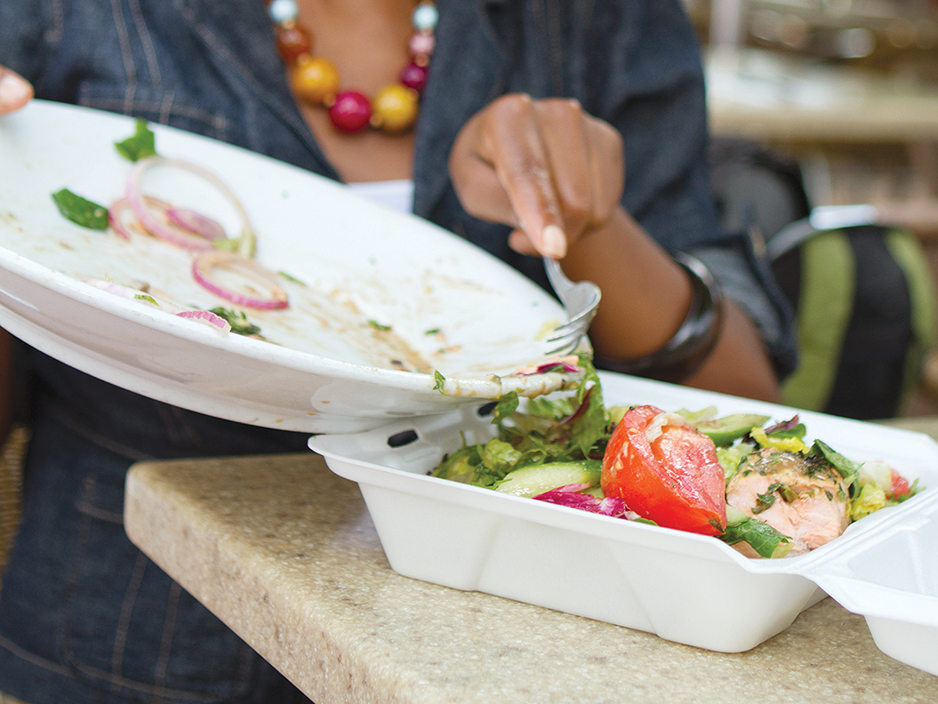Por: Administración de Alimentos y Medicamentos (FDA)

Food safety is a major concern for the United States. The Federal government estimates that there are about 48 million cases of foodborne illness annually - the equivalent of sickening 1 in 6 Americans each year. Todos los años, estas enfermedades resultan en aproximadamente 128,000 hospitalizaciones y 3,000 muertes.
But food waste is also a major concern. According to the Federal government, the U.S. leads the world in food waste, with Americans discarding nearly 40 million tons of food every year. That's worth more than $161 billion and comes to about 219 pounds of waste per person, or 30-40 percent of our food supply. Most of this wasted food is sent to landfills where it decomposes and produces methane. Landfills are the third largest source of methane emissions, which are a big factor in climate change because methane is so effective at absorbing the sun's heat, which warms the atmosphere.
The chief sources of food waste in the United States are the food industry and consumers. Within the food industry, waste occurs at every step - on the farm and with packers, processors, distributors, and retailers. Parte de esto es el resultado de factores económicos, algunos problemas de administración, y otra parte es causada simplemente por descartar productos que no tienen la apariencia perfecta. Several Federal agencies are cooperatively working with food industry entities to identify ways of reducing food waste.
For consumers, much food waste results from a misunderstanding of what the various wordings on product date labels mean, along with uncertainty about storage of perishable foods. Confusion over date labeling accounts for an estimated 20 percent of consumer food waste.
Fechas de los productos alimentarios
Except for infant formula, manufacturers are not required by Federal law or regulation to place date labels on packaged food. For all other foods, there are no uniform or universally accepted descriptions used on food labels for open dating (calendar dates) in the U.S. Accordingly, there are differing phrases used for product dating. Manufacturers apply date labels at their own discretion and for a variety of reasons. The most common is to inform consumers and retailers of the date to which they can expect the food to retain its desired quality and flavor. Industry is moving toward more uniform practices for date labeling of packaged foods. But, for now, consumers may see different phrases used for product dating, such as Sell By, Best By, Expires On, Best if Used By, etc. These are related to best quality, not to food safety. There is, however, a free source of information on safe storage of food.
The FoodKeeper — A Guide to Safe Food Storage
The FoodKeeper is an inclusive guide to how long virtually every food available in the United States will keep in the pantry, in the refrigerator, and in the freezer. Access the FoodKeeper here, or download it as a mobile application (Android Devices | Apple Devices).
Ways to Avoid Wasting Food
- Sea consciente de la cantidad de alimentos que desecha.
- No compre más alimentos de los que puede consumir antes de que se echen a perder.
- Planifique las comidas y use listas de compras. Piense en lo que está comprando y cuándo lo consumirá. Controle el refrigerador y la despensa para evitar comprar algo que ya tiene.
- Evite las compras impulsivas y al por mayor, especialmente de productos frescos y lácteos que tienen una vida útil limitada. Promotions encouraging purchases of unusual or bulk products often result in consumers buying foods outside their typical needs or family preferences, and portions - potentially large portions - of these foods may end up in the trash.
- Check the temperature setting of your fridge. Use a refrigerator thermometer to be sure the temperature is at 40°F (4°C) or below to keep foods safe. The temperature of your freezer should be 0°F (-18°C) or below.
- Avoid "overpacking:" Cold air must circulate around refrigerated foods to keep them properly chilled.
- Wipe up spills immediately: It not only reduces the growth of Listeria bacteria (which can grow at refrigerator temperatures), cleaning up spills — especially drips from thawing meats — will help prevent "cross-contamination," where bacteria from one food spread to another.
- Keep it covered: Store refrigerated foods in covered containers or sealed storage bags, and check leftovers daily for spoilage.
- Refrigerate peeled or cut produce for freshness and to keep them from going bad.
- Use your freezer! Freezing is a great way to store most foods to keep them from going bad until you are ready to eat them. The FoodKeeper has information on how long most common foods can be stored in the freezer.
- Check your fridge often to keep track of what you have and what needs to be used. Eat or freeze items before you need to throw them away.
- Cuando salga a cenar, piense bien antes de pedir. Si no está muy hambriento, pida porciones pequeñas. Bring your leftovers home and refrigerate or freeze them within two hours and check the FoodKeeper to see how long they'll be safe to eat.
- To keep foods safe when entertaining, remember the 2-Hour Rule: don't leave perishable foods out at room temperature for more than two hours, unless you're keeping hot foods hot and cold foods cold. If you're eating outdoors and the temperature is above 90°F (32°C), perishable foods shouldn't be left out for more than one hour.

